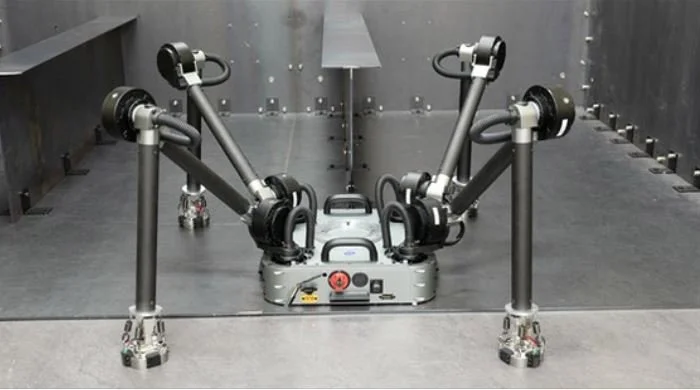Korea’s Shipyards Turn to Robotics as Industry Pushes Toward “Smart” Construction
At HD Hyundai Mipo Dockyard in Ulsan, robotic welding arms recently traced the seams of a 50,000-ton petrochemical carrier—performing a job long considered too intricate for machines. The demonstration offered a clear signal of where South Korea’s shipbuilding giants believe their future lies: automation, AI, and vertically integrated “smart yards.”
Outer-deck welding has historically resisted automation due to uneven steel surfaces and obstructing pipes. Yet during the October showcase, collaborative robots handled the task smoothly. HD Hyundai Mipo now aims to raise the automation rate of deck block welding from 58.6 percent to roughly 80 percent.
Similar investments are playing out across the industry. HD Hyundai Samho Heavy Industries operates an Automation Innovation Center training more than 80 welding robots. It was also the first to apply collaborative robots to shaping large curved hull blocks—the front and rear sections of a ship—traditionally the domain of master “plate benders” who work by feel. Converting that tacit skill into data remains a major challenge.
HD Hyundai Mipo Dockyard in Ulsan recently demonstrated collaborative welding robots at work on a 50,000-ton petrochemical carrier, highlighting its latest advances in automated shipbuilding. [HD HYUNDAI]
“Training AI with plate benders’ knowledge requires quantifying their experience,” said Ryu Cheol-ho, professor of shipbuilding and mechanical engineering at Inha Technical College. “But shipyards still lack enough of that data.”
Samsung Heavy Industries has partnered with Rainbow Robotics to develop AI-equipped welding robots and is working with startup Diden Robotics on quadruped climbing robots that can cling magnetically to steel hulls. Meanwhile, Hanwha Ocean is investing 160 billion won ($111 million) to transform its Geoje facility into a smart yard—technology it plans to apply to its U.S.-based Philly Shipyard.
The country’s leading shipbuilders are also building digital ecosystems to support automation. Samsung Heavy Industries introduced a full-process automated design platform, S-EDP, in October. HD Hyundai is expanding a digital twin project launched last year into what it calls a “visible shipyard,” with the goal of achieving a fully autonomous yard by 2030.
The Diden 30, a quadruped robot built for autonomous operation in hazardous, hard-to-reach areas, uses foot-shaped legs and magnetic feet for secure movement on steel surfaces. [KAIST]
Tech companies are entering the mix as well. Naver and Nvidia announced a joint effort to develop a physical AI platform using Omniverse, Isaac Sim, and Naver Cloud’s digital-twin tools to simulate shipyards and train AI models before deployment.
Industry analysts say the push toward smart yards could help Korean shipbuilders expand overseas, where skilled labor is harder to secure.
“Smart shipyards could reduce dependence on experienced workers,” said Lee Eun-chang, research fellow at the Korea Institute for Industrial Economics & Trade. “If successful, Korea may not just export ships—but the shipyards themselves.”

